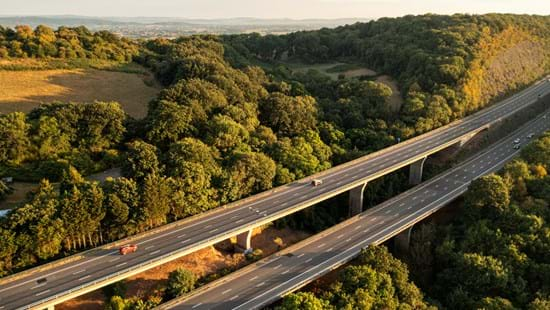Coverage of National Highways’ road plans for 2025-30

What our recently published Strategic Road Network Initial Report means for the future of road transport.
One headline last week exclaimed: “No new road building projects starting before 2030”. Another put it rather more forcefully: “Roads axed”.
These headlines – and many others like them – were found on media stories published following the release of a major new blueprint from National Highways.
The Strategic Road Network Initial Report sets out advice to government on our priorities for the 4,500-miles of motorways and major A-roads that we operate throughout England. The report, released on Thursday, sought to explain how we intend to maintain and improve this critical national asset over the five years from 2025 to 2030.
So does it really say “no new road building” before 2030? The truth, as ever, is more nuanced.
In a nod to these headlines, a major theme running throughout the report is our desire to increasingly focus on making the most of our existing network in the most environmentally-sustainable way possible. This means a renewed focus on proactive maintenance (identifying and fixing problems on the network before they emerge) and addressing congestion hotspots where our roads meet those operated by local authorities, often through small-scale upgrades. It also means creating space for more electric car chargers, lorry parking and making these journeys smoother by providing road users with more real-time and personalised information.
Safety is another crucial theme in the report, with an acknowledgement that more needs to be done to meet our ultimate goal of creating a “zero harm” network, free of all fatalities and injuries. One way we propose to do this between 2025 and 2030 is by making targeted upgrades to single carriageway A-roads – the part of our network that sees more accidents per mile than motorways and dual carriageways – with our plans initially focusing on 17 routes covering 147 miles.
What it does not say, however, is that we will completely stop making more significant improvements to the network where needed.
Firstly, National Highways will continue to work on delivering a number of major schemes already announced. This includes multi-billion pound projects such as improving the A303 near Stonehenge, the Lower Thames Crossing and the A66 Northern Trans-Pennine dualling scheme, all of which are designed to improve traffic flow, boost connectivity and reduce congestion.
Secondly, we will also propose some bigger improvements to the existing network footprint where they are needed. In many cases, improvement works, carried out to address known safety and congestion issues, will involve smaller, local schemes aimed at slip-roads and junctions, often valued at £2m to £25m. However, we could also propose more complex, large-scale upgrades where the need is identified, often addressing problems raised directly by local authorities, communities, businesses and sub-national transport bodies.
Our network binds together all regions and nations of the UK, facilitating national and international trade, as well as connecting friends and families and ensuring people reach the workplace.
Even under conservative forecasts, demand for the network, which currently carries 4 million vehicles a day, will continue to increase up to 2050 and investment will be needed to make these journeys safe and reliable.
As a business, we must come up with nimble, innovative and green solutions to this challenge… and that means having a whole suite of available options.
